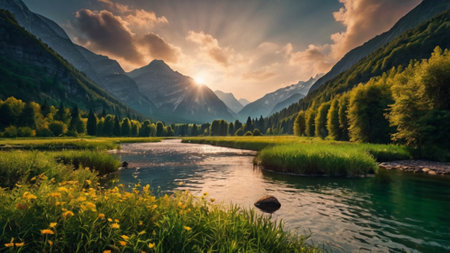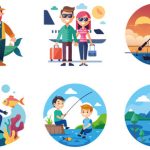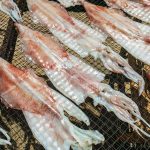1. The Allure of High Elevation Fishing
Colorado’s high elevation waters offer a one-of-a-kind fishing experience that draws anglers from across the country. Whether youre hiking into a crystal-clear alpine lake or casting into a hidden mountain stream, these remote locations provide both natural beauty and rewarding fishing opportunities.
Pristine Waters Teeming with Life
Many of Colorado’s alpine lakes and streams are fed by snowmelt, resulting in cold, clean water ideal for sustaining trout populations. These waters often support wild and native species like cutthroat, brook, and rainbow trout. Because many of these spots are difficult to reach, they remain less pressured by other anglers, giving you a better chance at hooking a feisty fish in untouched conditions.
Common Trout Species Found in Alpine Lakes
| Species | Typical Size | Best Time to Fish |
|---|---|---|
| Cutthroat Trout | 10–16 inches | Late June – September |
| Brook Trout | 8–14 inches | July – Early October |
| Rainbow Trout | 12–18 inches | June – September |
Breathtaking Mountain Scenery
The fishing is only part of the experience. Imagine casting your line while surrounded by jagged peaks, pine forests, and wildflower-filled meadows. At elevations above 9,000 feet, these landscapes feel worlds away from the hustle of daily life. Whether it’s sunrise reflecting off a glassy lake or spotting elk along the trail, nature adds an unforgettable backdrop to every trip.
A Peaceful Escape from the Crowds
If you’re looking for solitude, high elevation angling delivers. Many alpine lakes require a hike to access, which naturally filters out heavy foot traffic. The farther you go off the beaten path, the more likely you are to have an entire stretch of water all to yourself. This sense of isolation is what many anglers treasure most—it’s just you, your rod, and the rhythm of mountain waters.
Why Choose High Elevation Fishing?
- Less Pressure: Remote locations mean fewer anglers and more active fish.
- Scenic Rewards: Stunning views accompany every cast.
- Crisp Air & Tranquility: Enjoy peaceful moments far from city noise.
- Diverse Species: Opportunities to catch native and wild trout.
- An Adventure: Hiking in makes every trip feel earned and memorable.
If youre seeking an angling adventure that offers both challenge and serenity, Colorados alpine lakes and hidden streams should be at the top of your list.
2. Gearing Up for the Alpine Experience
Fishing at high elevations in Colorado’s alpine lakes and hidden streams is a breathtaking experience—literally and figuratively. But before you hit the trailhead, it’s important to be properly geared up for the unique challenges of mountain angling. From lightweight rods to layering systems that handle shifting weather, here’s what you’ll need.
Essential Fishing Gear
The right gear makes all the difference when fishing above 9,000 feet. You want equipment that’s light enough to carry on a long hike but still durable enough to handle rugged terrain and strong mountain trout.
| Gear | Why It Matters |
|---|---|
| Lightweight Fly Rod (3–5 wt) | Easier to pack and ideal for small alpine streams and lake trout. |
| Collapsible Spinning Rod | A good backup option if you prefer spinning setups—compact and travel-friendly. |
| Slim Tackle Box | Packs easily in a backpack; include dry flies, nymphs, and small spinners. |
| Tippet and Leader Material | Carry different sizes (4X–6X) to adjust for water clarity and fish size. |
| Portable Net | A rubber mesh net is gentle on fish and won’t tangle your flies. |
| Pliers or Forceps | Helps with hook removal in catch-and-release waters. |
| Floatant & Desiccant | Keeps your dry flies riding high on cold mountain waters. |
Dressing for the Mountains
The weather in Colorado’s high country can change rapidly—sunny one minute, hailing the next. Dressing in layers helps you stay comfortable no matter what the skies throw your way.
Layering System Overview:
| Layer | Description |
|---|---|
| Base Layer | Moisture-wicking material like merino wool or synthetic fabric; keeps sweat off your skin. |
| Mid Layer | An insulating fleece or down jacket to trap heat during chilly mornings or sudden temperature drops. |
| Outer Shell | A waterproof, breathable rain jacket protects against wind, rain, and even snow flurries. |
| Pants | Nylon or quick-dry hiking pants; avoid jeans as they hold moisture and restrict movement. |
| Socks & Footwear | Wool socks paired with waterproof hiking boots or wading boots if youre getting into the water. |
The Wader Debate: To Wear or Not to Wear?
If youre planning to fish from shore or only wade into shallow areas, wet wading with neoprene socks may be all you need during warmer months. But for colder conditions or deeper waters, pack breathable chest waders—theyll keep you dry without overheating during long hikes in. Dont forget gravel guards to keep debris out of your boots!
Packing Smart: Backpack Essentials
Your backpack should carry more than just fishing gear. Here are some must-haves for an alpine fishing trip:
- Sunscreen & lip balm with SPF (high altitudes mean stronger UV rays)
- A compact first aid kit
- A map or GPS device (cell service is spotty at best)
- A headlamp or flashlight (just in case you stay out longer than expected)
- A water filter or purification tablets (streams look clean but play it safe)
- Nutrient-rich snacks like trail mix or energy bars
- An emergency poncho or space blanket for unexpected storms
The key to enjoying Colorado’s alpine fishing spots is being prepared for everything—from technical terrain to unpredictable mountain weather. With the right gear and clothing system dialed in, you’ll spend less time worrying about comfort and more time casting into those cold, crystal-clear waters teeming with trout.
![]()
3. Target Species in Alpine Waters
Colorado’s high-elevation lakes and streams are home to some of the most iconic trout species in North America. These cold, clear waters provide ideal conditions for native and introduced fish that thrive in alpine environments. Whether youre hiking into a remote mountain lake or casting into a bubbling creek, knowing what species you might encounter—and how to tell them apart—can enhance your angling experience.
Common Trout Species in Colorados High Country
Here are the three main trout species youre likely to catch while fishing in Colorado’s alpine waters:
| Species | Appearance | Where to Find | Special Notes |
|---|---|---|---|
| Cutthroat Trout | Olive-green to gold with red-orange slash marks under the jaw | Native to many high-altitude lakes and streams; often found in wilderness areas | Colorado’s only native trout; several subspecies like Greenback and Rio Grande are protected |
| Brook Trout | Dark green with worm-like markings on back and red spots with blue halos on sides | Small creeks and ponds; often found at higher elevations above 10,000 feet | Technically a char, not a true trout; known for aggressive feeding behavior |
| Rainbow Trout | Silvery body with pinkish lateral stripe and black spots throughout | Larger alpine lakes and stocked locations; prefers cooler water temps | A popular sport fish; widely stocked across Colorado |
How to Identify Each Species
If youre new to high elevation fishing, telling these fish apart can be tricky at first. Here are a few quick tips:
- Cutthroat Trout: Look for the distinct red or orange slash under the jaw—this is the easiest way to recognize them.
- Brook Trout: Their colorful belly (especially during spawning) and white-tipped fins make them stand out.
- Rainbow Trout: The pink or red horizontal stripe along the side is their signature feature.
Why It Matters
Understanding which species youre catching isnt just cool—it also helps support conservation efforts. Some cutthroat subspecies are threatened, so being able to identify them ensures you’re following local regulations and practicing responsible catch-and-release when needed.
Pro Tip:
Certain alpine waters have specific rules depending on the species present. Always check the latest Colorado Parks and Wildlife fishing regulations before you head out.
The more familiar you become with these beautiful alpine trout, the more rewarding your high-elevation angling adventures will be!
4. Techniques and Tactics for Mountain Fly Fishing
Fly fishing in Colorado’s high-elevation lakes and hidden streams requires a different approach than casting on lowland rivers or popular tailwaters. The clear, cold waters and often wary trout of alpine environments call for subtlety, patience, and the right fly patterns. Here’s how to increase your chances of success when heading into the mountains.
Reading the Water
Mountain streams and alpine lakes may be small, but that doesn’t mean they’re simple. Look for deeper pools, undercut banks, submerged boulders, and transitions between fast and slow water—these are prime holding spots for trout trying to conserve energy while staying close to food sources. In lakes, focus on drop-offs near the shore, inflow/outflow areas, and structure like submerged logs or rocky points.
Stealth is Key
Trout in high-country waters are highly sensitive to movement and vibrations. Approach slowly, keep a low profile, and avoid casting shadows over the water. Wear muted clothing that blends into the environment—think earth tones or camo. When possible, position yourself downstream or off to the side of your target area to stay out of the fish’s line of sight.
Effective Fly Presentation
In these crystal-clear waters, presentation matters just as much as fly choice. Dry flies are especially effective during summer hatches, but they must land softly and drift naturally. Avoid drag by using long leaders (9–12 feet) with fine tippet (5X–6X). Practice reach casts and mends to keep your fly moving with the current rather than across it.
Go-To Fly Patterns for Alpine Waters
The insect life in high-elevation environments is typically less diverse than in lower-altitude rivers, so having a few reliable patterns can go a long way. Here are some time-tested favorites:
| Fly Pattern | Type | Best Use |
|---|---|---|
| Parachute Adams | Dry Fly | All-purpose mayfly imitation; great during afternoon hatches |
| Elk Hair Caddis | Dry Fly | Floats well; ideal for faster runs and riffles |
| Griffith’s Gnat | Dry Fly | Excellent for small midges; perfect for calm lake surfaces |
| Zebra Midge | Nymph | Killer pattern under a dry or indicator in slower pockets |
| Pheasant Tail Nymph | Nymph | Works year-round; imitates many aquatic insects |
| Woolly Bugger (olive or black) | Streamer | Great for prospecting alpine lakes; use near drop-offs or structure |
Tactical Tips for High Elevation Success
Time Your Trips Right:
The best fishing in alpine areas usually happens from late June through early September when snowmelt has subsided and insect activity is high.
Match the Hatch:
If you see fish rising, take a moment to observe what insects are on the water before tying on a fly. Matching size is often more important than color.
Pace Yourself:
The altitude can take a toll on your energy levels. Take breaks, stay hydrated, and give yourself plenty of time to move between spots.
Pack Light but Smart:
A compact fly box with versatile patterns, floatant, extra tippet, polarized sunglasses, and a lightweight net should always be part of your mountain kit.
Mastering these techniques will not only improve your catch rate but also deepen your appreciation for the quiet beauty of Colorado’s alpine waters.
5. Conservation and Ethical Fishing Practices
Fishing in Colorado’s alpine lakes and hidden streams is more than just an adventure—its a chance to connect with nature while helping protect it. These high-elevation environments are delicate and require responsible behavior from anglers to ensure future generations can enjoy them too. Here’s how you can fish responsibly while exploring Colorado’s mountain waters.
Catch-and-Release Done Right
Many alpine streams and lakes are home to native trout species like the Colorado River cutthroat, which are often protected. Practicing proper catch-and-release helps maintain healthy fish populations. Here are a few key tips:
| Best Practice | Why It Matters |
|---|---|
| Use barbless hooks | Makes unhooking easier and reduces injury to the fish |
| Keep fish in the water | Minimizes stress and increases survival chances |
| Wet your hands before handling | Protects the fish’s slime coating, which prevents disease |
| Release quickly | The less time out of water, the better for the fishs health |
Leave No Trace Fishing Ethics
Colorado’s high country is pristine, and its up to all of us to keep it that way. The Leave No Trace principles apply directly to fishing in remote wilderness areas:
- Pack out all trash: Including fishing line, bait containers, and food wrappers.
- Avoid trampling vegetation: Stick to durable surfaces like rocks or established trails when possible.
- Respect wildlife: Keep your distance from animals and nesting sites.
- No campfires near alpine lakes: Wood is scarce at high elevations, so use a stove instead.
Know the Local Regulations
Laws can vary widely between different bodies of water in Colorado, especially when it comes to protected species or seasonal closures. Always check with Colorado Parks & Wildlife (CPW) before heading out. Here’s what to look for:
| Regulation Type | Description |
|---|---|
| Certain species restrictions | You may only be allowed to catch-and-release specific trout species like native cutthroat. |
| Bait bans | Artificial lures only areas help prevent harm to fragile ecosystems. |
| Seasonal closures | Lakes or streams may close during spawning seasons or due to low water levels. |
Your Role as a Steward of the Mountains
The beauty of high-elevation angling comes with responsibility. By practicing ethical fishing techniques and staying informed, youre helping preserve these fragile ecosystems for years to come. Whether youre landing your first alpine trout or hiking deep into backcountry waters, remember—it’s not just about catching fish; it’s about protecting the places that make these experiences possible.


